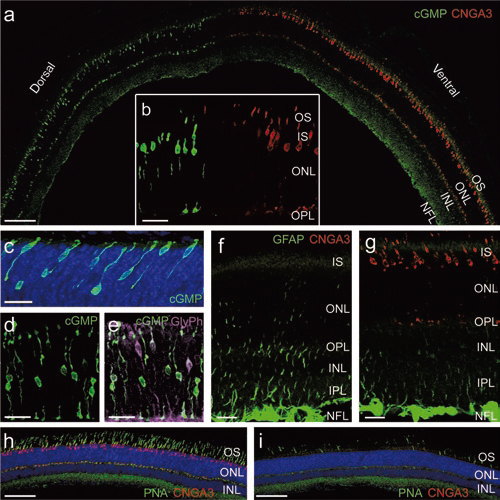Restoration of Cone Vision in the CNGA3−/− Mouse Model of Congenital Complete Lack of Cone Photoreceptor Function
05-Dec-2010
Molecular Therapy, 2010, doi:10.1038/mt.2010.149, published on 05.12.2010
Molecular Therapy, online article
Congenital absence of cone photoreceptor function is associated with strongly impaired daylight vision and loss of color discrimination in human achromatopsia. Here, we introduce viral gene replacement therapy as a potential treatment for this disease in the CNGA3(-/-) mouse model. We show that such therapy can restore cone-specific visual processing in the central nervous system even if cone photoreceptors had been nonfunctional from birth. The restoration of cone vision was assessed at different stages along the visual pathway. Treated CNGA3(-/-) mice were able to generate cone photoreceptor responses and to transfer these signals to bipolar cells. In support, we found morphologically that treated cones expressed regular cyclic nucleotide-gated (CNG) channel complexes and opsins in outer segments, which previously they did not. Moreover, expression of CNGA3 normalized cyclic guanosine monophosphate (cGMP) levels in cones, delayed cone cell death and reduced the inflammatory response of Müller glia cells that is typical of retinal degenerations. Furthermore, ganglion cells from treated, but not from untreated, CNGA3(-/-) mice displayed cone-driven, light-evoked, spiking activity, indicating that signals generated in the outer retina are transmitted to the brain. Finally, we demonstrate that this newly acquired sensory information was translated into cone-mediated, vision-guided behavior.











